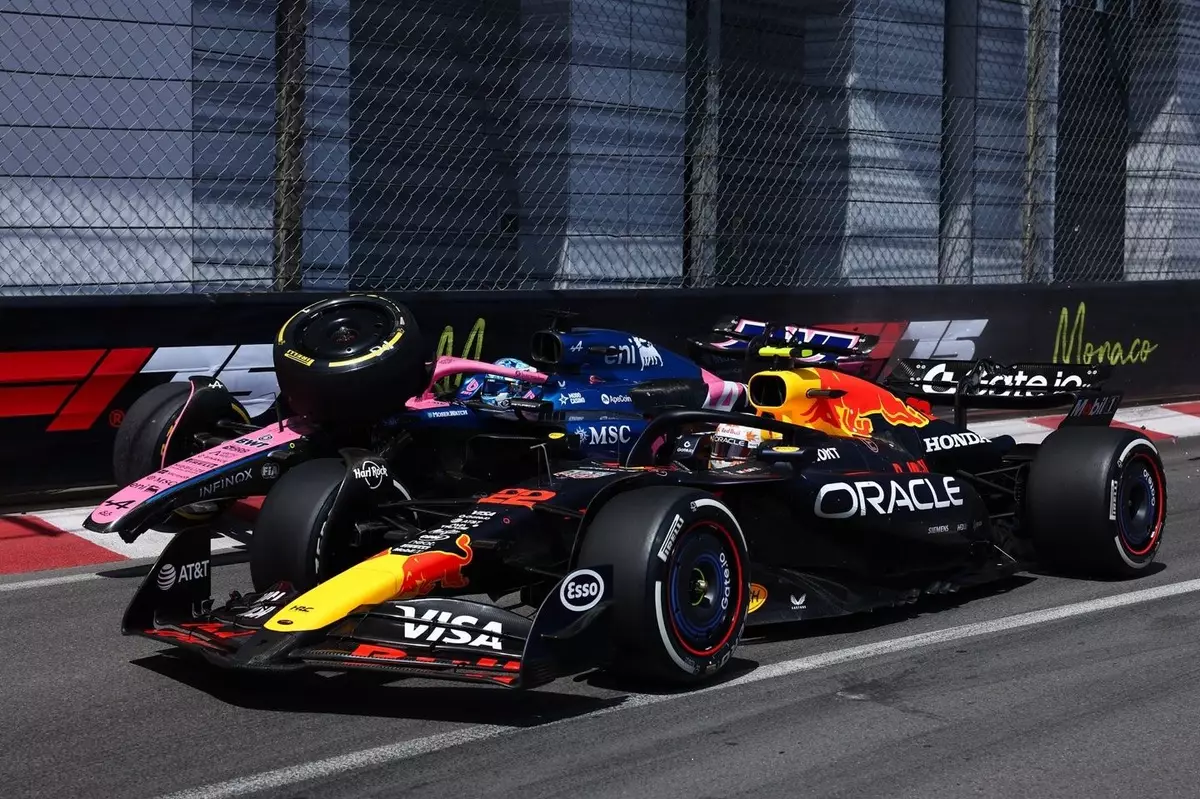In the high-stakes world of Formula 1, where precision driving and team allegiance dictate much of the action, incidents like the collision between Pierre Gasly and Yuki Tsunoda during the Monaco Grand Prix raise questions beyond mere racing accidents. Tensions simmer not only on the track but also beneath the surface of individual ambitions and team strategies. Gasly’s assertion that Tsunoda’s actions led to their crash underscores a deeper narrative about the struggles of former teammates navigating the delicate balance of competition and camaraderie.
The collision itself occurred under duress, with both drivers fighting for position—Gasly in his Alpine and Tsunoda in his Red Bull—after unusually early pit stops. The dense atmosphere of competitive racing often magnifies such incidents, highlighting how minor errors can have outsized consequences. Gasly’s remark, “I committed to the right and then he moved back onto the racing line,” paints a vivid picture of the split-second decisions that define Formula 1 racing. Such moments become even more critical on tight circuits like Monaco, where the slightest misjudgment can lead to disaster.
Understanding the Collision: Miscommunication or Misjudgment?
Gasly’s interpretation of events places the blame squarely on Tsunoda, claiming the latter moved defensively without regard for their overlapping trajectories as they approached the braking zone. Gasly’s defensive posture—“For me, you’ve got to stick to your line”—reflects a common ethos among drivers: once a position is established, it must be respected. Yet, Tsunoda’s counterpoint, asserting that he was simply holding his line, introduces a layer of complexity to the debate. The reality is that while both drivers seek to protect their positions, the interpretation of racing lines can vary significantly, leading to conflicts and the type of crash that occurred.
The terms used in this dialogue—“no brakes” and “erratic driving”—are powerful in their implications. Gasly’s assertion that his radio message was misinterpreted nonetheless stems from a common driver’s instinct to cover one’s own decisions, especially when things go awry. Conversely, Tsunoda’s defensiveness suggests a level of confidence in his own driving decisions, revealing how each driver interprets the race from their unique perspective. This disconnect can lead to tensions that are not merely about racing but the personalities involved.
The Broader Implications for Alpine Racing
The back-and-forth between the two drivers isn’t just a question of individual accountability; it casts a long shadow over Alpine’s struggling season. Gasly’s remark regarding the track’s incompatibility with the A525 model speaks volumes about the limitations the team has faced. The collision is emblematic of a larger struggle—not just of drivers fighting for position, but of a team battling to find its pace in the cutthroat competitive environment of Formula 1.
Alpine’s disappointing performance in Monaco, marked by a dismal qualifying session and a lackluster finish, reflected broader deficiencies in their car’s design. Gasly’s observation that “the ride in general… is not the strength of our car” emphasizes the engineering challenges faced by the team. It is clear that while driver skill plays a crucial role, the machinery of racing — the car itself — can make or break a team’s season.
A Look Ahead: Optimism Amidst Challenges
Looking hacia the future, Gasly’s expectations for the upcoming Spanish Grand Prix offer hints of optimism amid the chaos. His confidence that Barcelona’s high-speed layout will better suit the Alpine reflects a pragmatic understanding of racing dynamics. Given that Alpine previously demonstrated the capability to reach Q3, the chance to recoup points may serve as a motivator for both the team and its drivers.
Ultimately, the fallout from the Monaco collision may serve as a crucible for Gasly and Tsunoda, forcing them to recalibrate their approaches to racing and collaboration. The interconnected web of personal dynamics, strategic maneuvering, and technical shortcomings illustrates how complex the world of Formula 1 truly is — where victories are often determined as much by the hearts and minds of drivers as by the roar of engines on the track.


Leave a Reply